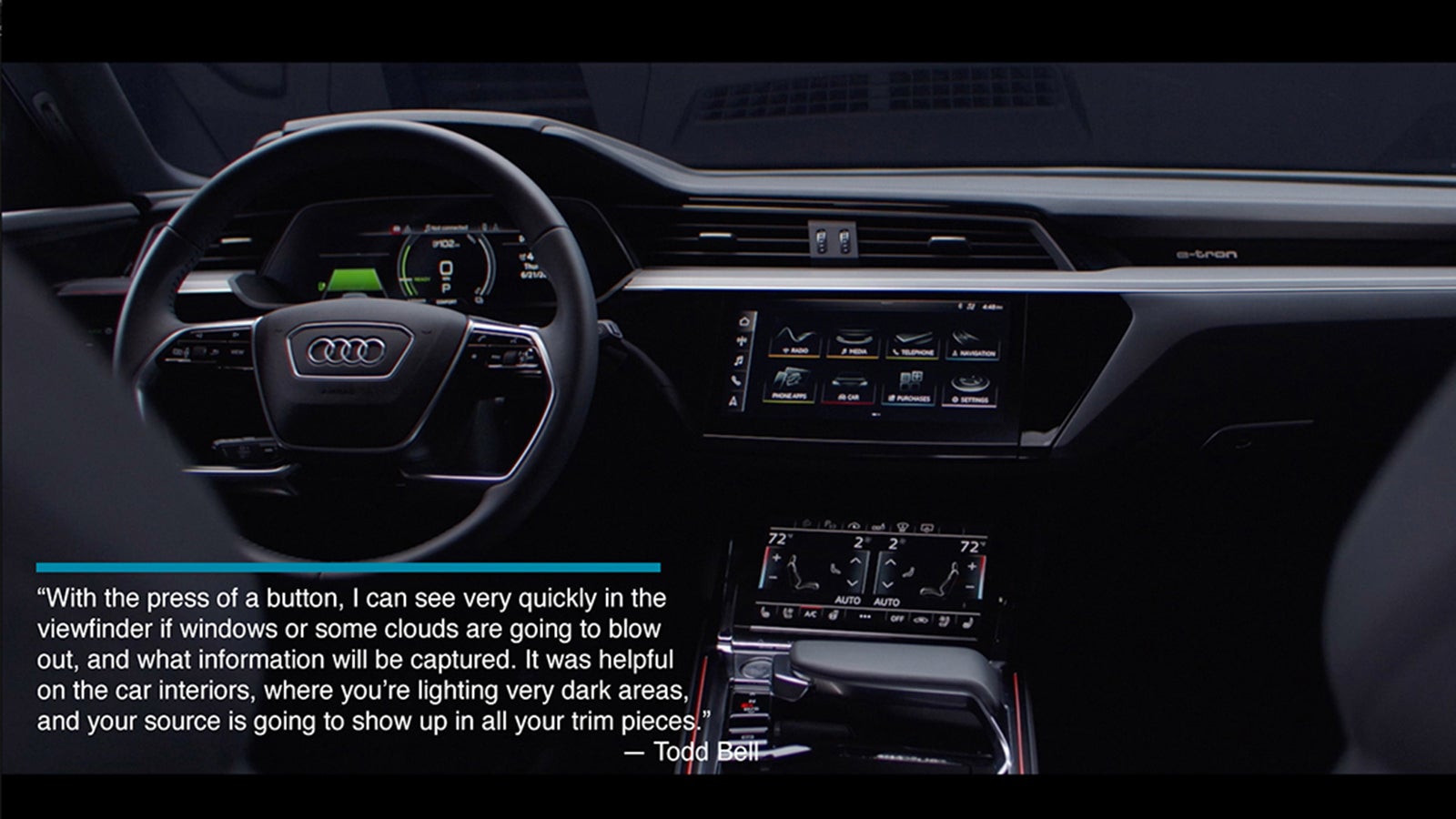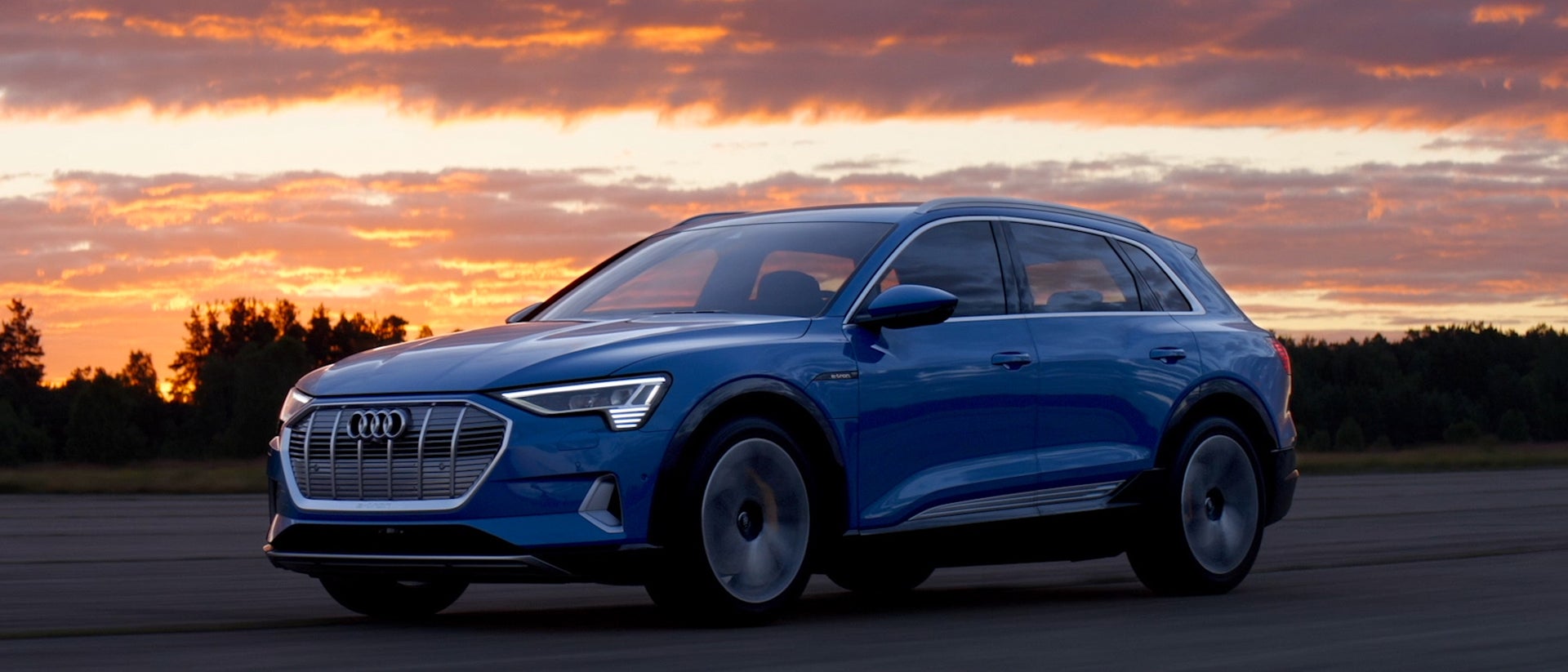
06-18-2019 - Case Study
Audi’s e-tron Electric Vehicle Calls for Sony VENICE
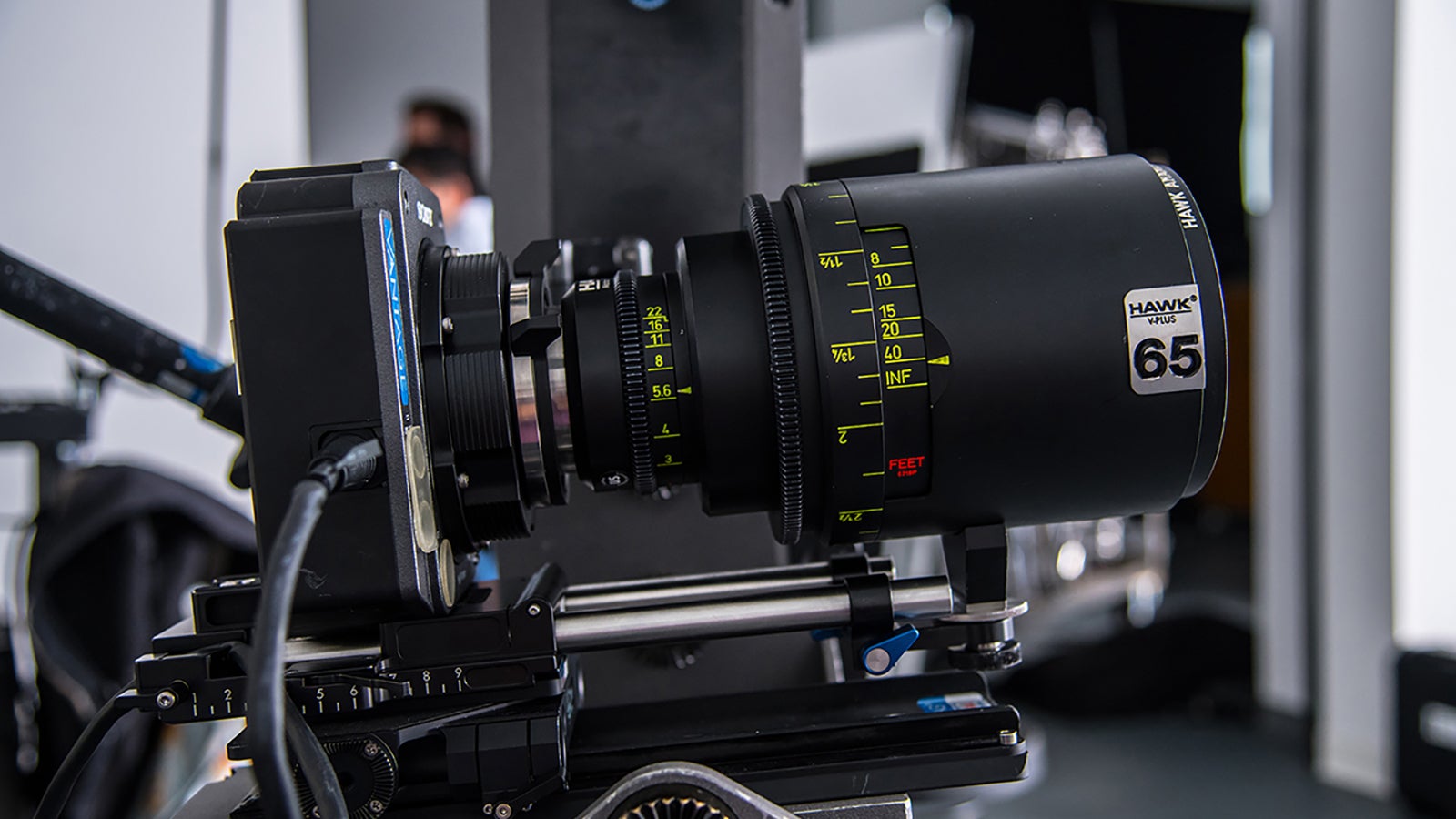
By David Heuring
Audi’s familiar four-ring symbol is an indication of the luxury carmaker’s marketing savvy, which goes back to the company’s founding in 1932. Now part of the Volkswagen group, Audi’s sophisticated approach to branding and advertising continues with a series of commercials that debuted on the Emmy Awards telecast in September 2018, seen by more than 10 million viewers. The new campaign was designed to highlight Audi’s entrance into the high-end electric car market with the e-tron, a battery-powered SUV that exudes refined style and will compete with models from Tesla and Jaguar.
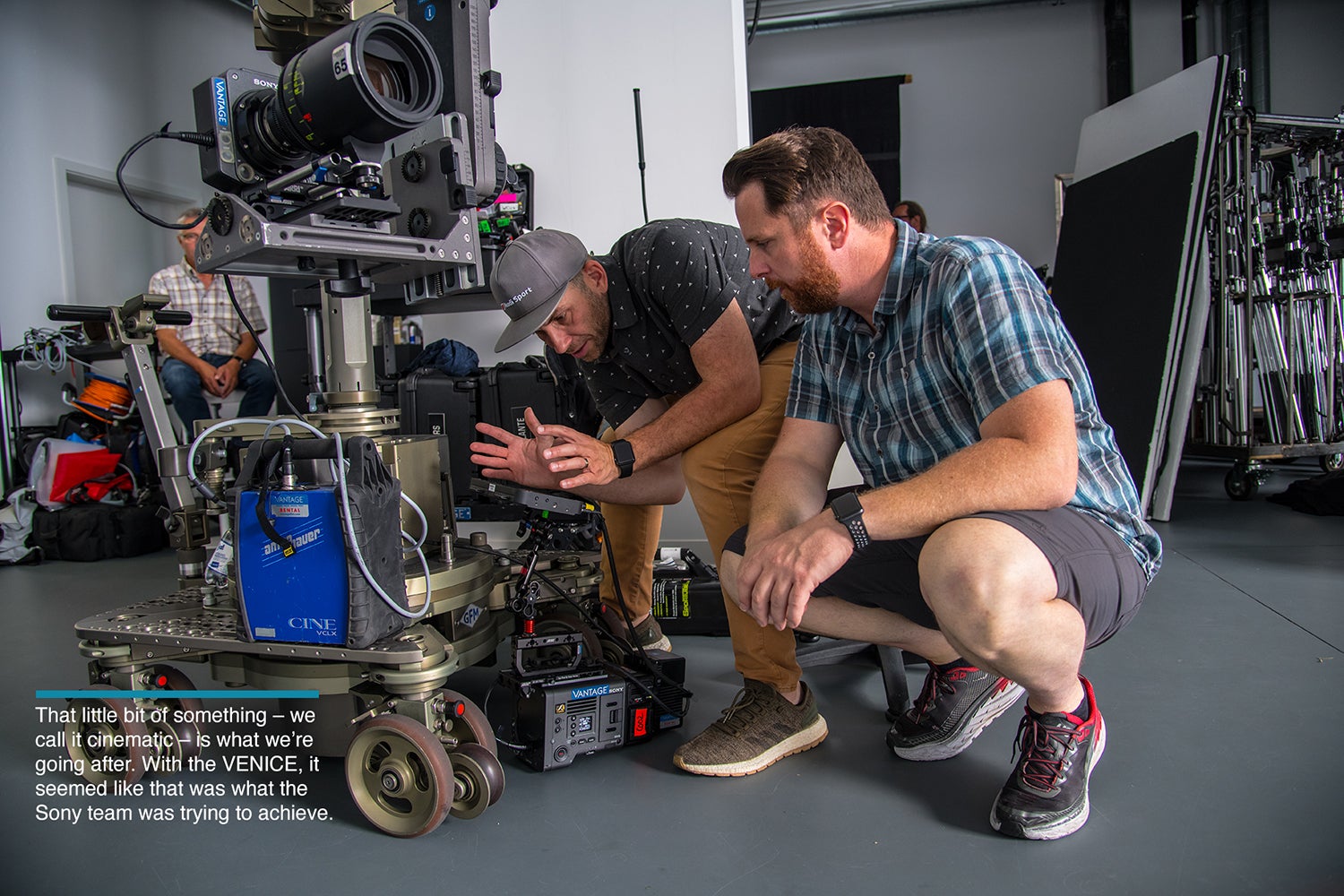
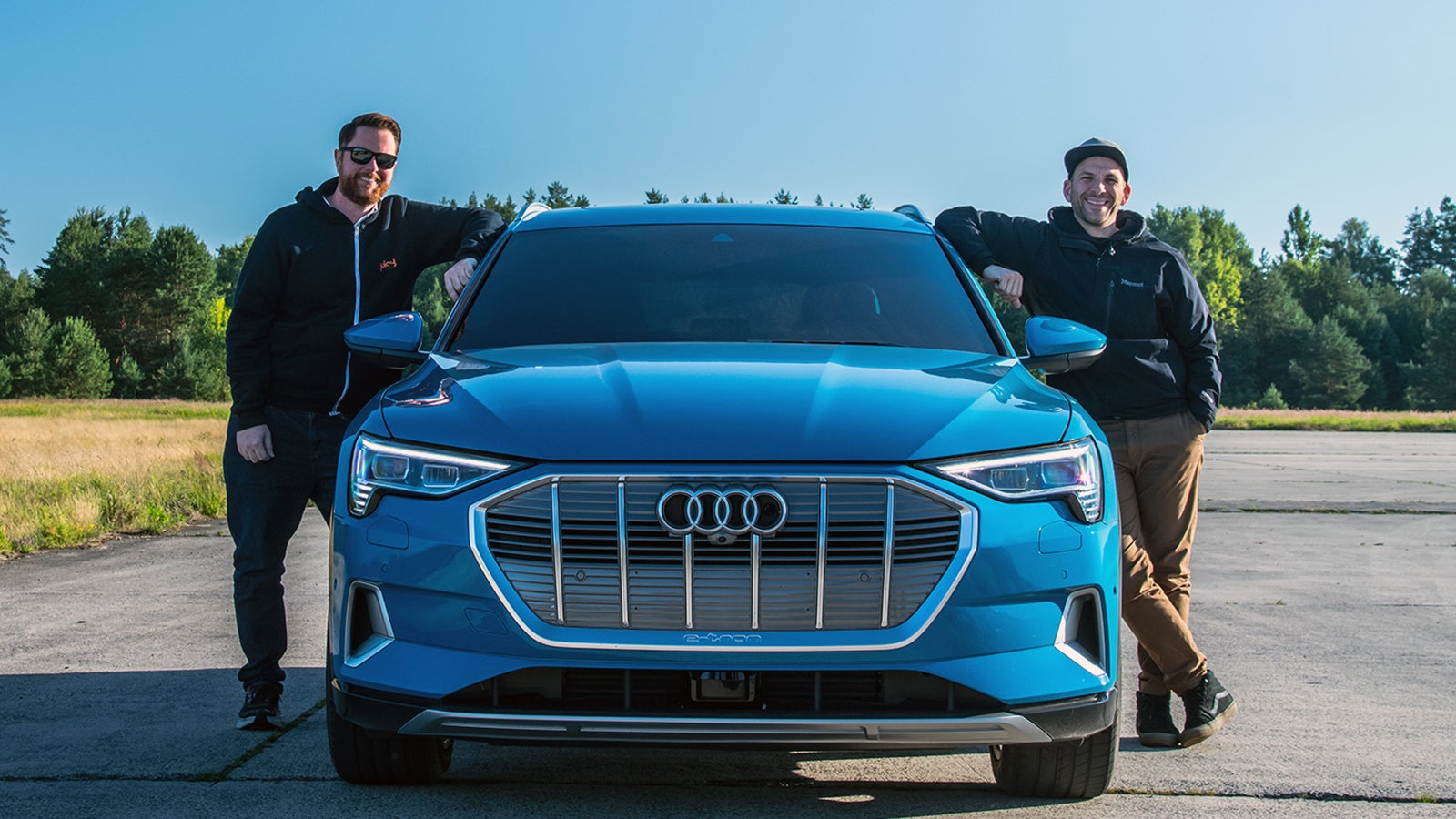
Nicholas Kleczewski and Todd Bell were key members of the team. Audi contracted with them to create content that would be provided to markets around the world for use in regional advertisements, as well as a documentary film consisting of interviews with engineers and designers who contributed to the development of the Audi e-tron. According to Kleczewski, who directed the project, the goal throughout was to differentiate the vehicle.
“Other manufacturers are coming out with electric SUVs,” he says. “Why is the Audi so special? To answer that question, we made a very in-depth series with interviews and footage from facilities all over the world. It’s a pretty huge body of work. We wanted to depict the passion and care that the company has put behind the car, as opposed to doing something slapdash just to get it on the market. As Audi puts it, this is their most important car in 40 years. They are staking their claim as an electric car company with an entirely original vehicle designed from the ground up.”
The filmmakers traveled throughout the Czech Republic, as well as to Brussels, where some assembly is done, and to Germany, where the design team works. When it came to choosing the right camera and lenses, Kleczewski was deeply involved.
“I’m a bit of a nerd when it comes to the latest and greatest in any production gear, but especially cameras,” he says. “I had been tracking what Sony was claiming with the VENICE camera. Sony has had a reputation for a look that’s a little more laser-sharp, for seeing what the eye sees. But the reason film emulsion is so revered is that it’s wrong. It’s not because it captures reality perfectly – it doesn’t. And that’s why we love it. That little bit of something – we call it cinematic – is what we’re going after. With the VENICE, it seemed like that was what the Sony team was trying to achieve. I think they put a lot of effort into polling what the community wanted, and into rethinking what a cinema camera means.”
Kleczewski and Bell put the VENICE through its paces at Vantage Film’s headquarters in Bavaria. They especially liked the VENICE Extension Block System, which allows the image capture elements to be separated from the rest of the camera by as much as 18 feet, making for a very compact setup. The system grew from Sony’s work with James Cameron on the forthcoming Avatar sequels, and promises to bring very high image quality to handheld stabilizers, drones and remote heads.
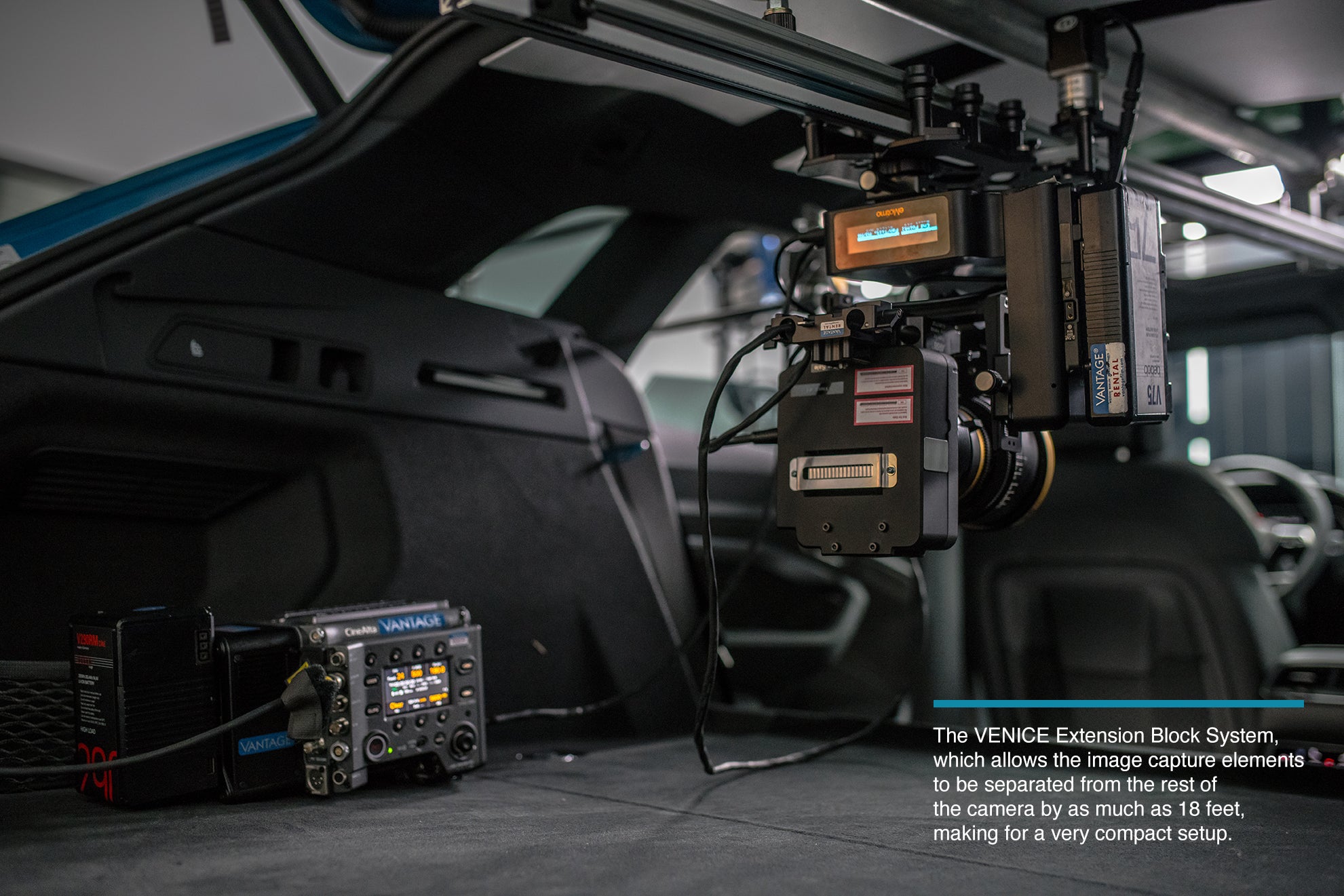
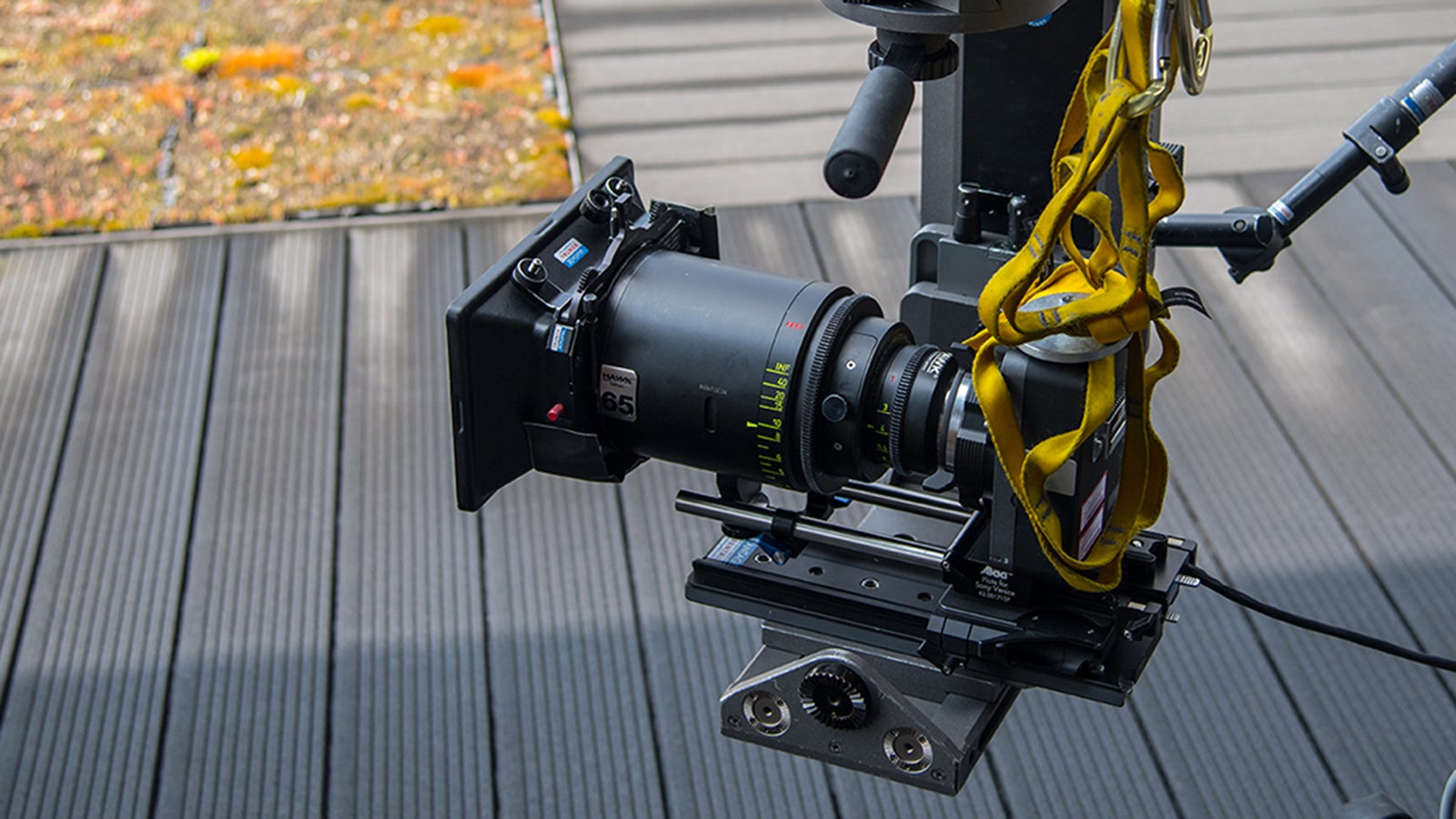
“It’s a concept I’ve been shouting from the rooftops for a long time,” says Kleczewski. “If someone could find a way to minimize the image capture part of it, and push all the other stuff down the line, there’s tremendous potential. In the car world, you’re always trying to fit yourself into impossible spaces, to get angles you just can’t see with the human eye. Often you’re either compromising on image quality to get those crazier shots, or taking the car apart. So Sony’s new tethered system sounded like my dream come true.”
The modular camera option would also come in handy while shooting unobtrusively in working factories, and a smart approach to ND filtration was also a factor. Testing also revealed the camera’s graceful reproduction of skin tones and highlights. Along with Vantage’s Hawk V-Plus anamorphics and MiniHawk glass, the VENICE was deemed the right camera for the shoot.
The team had seven straight days of interviews, and 17 days in a row with the first production model of the vehicle. Strict secrecy on every aspect was the order of the day. Bell, a veteran cinematographer, says he came to the project as an ARRI lover.
“But I like the VENICE just as much,” he says. “The functionality of the VENICE is going to make it hard to go back to anything else. The camera is an absolute pleasure to work with. It’s got a feature set that just feels like it’s from the future. When you’re shooting the interior of cars, every ounce matters, and every cubic inch of volume matters. We were often hanging the camera off the side of the car or a building, where the minimal size was crucial to the feeling of the shots. I don’t think there’s any way we could have done it without the tether system. It has unlocked new capabilities for rigged shots.”
On the shoot, flexibility and adaptation were prized. There was not a script per se. Instead Kleczewski and Bell reacted in the moment, especially on the documentary portion of the shoot. Some of the interview footage was done with a different camera.
“We definitely needed to go into their design studio and capture these moments as they happened,” says Kleczewski. “We wanted to go into the production plant where the robots are assembling everything, and to go into where the labs where they are doing the chemistry testing for the batteries – and show what’s cool about the electric aspects of the car. We make decisions based on how a project evolves in real time, and we run that by the client and go for it. So we need a camera that is versatile and can handle all of those situations without needing to be built out for every different situation. That’s very important to us because it allows us to work the way we work best.”
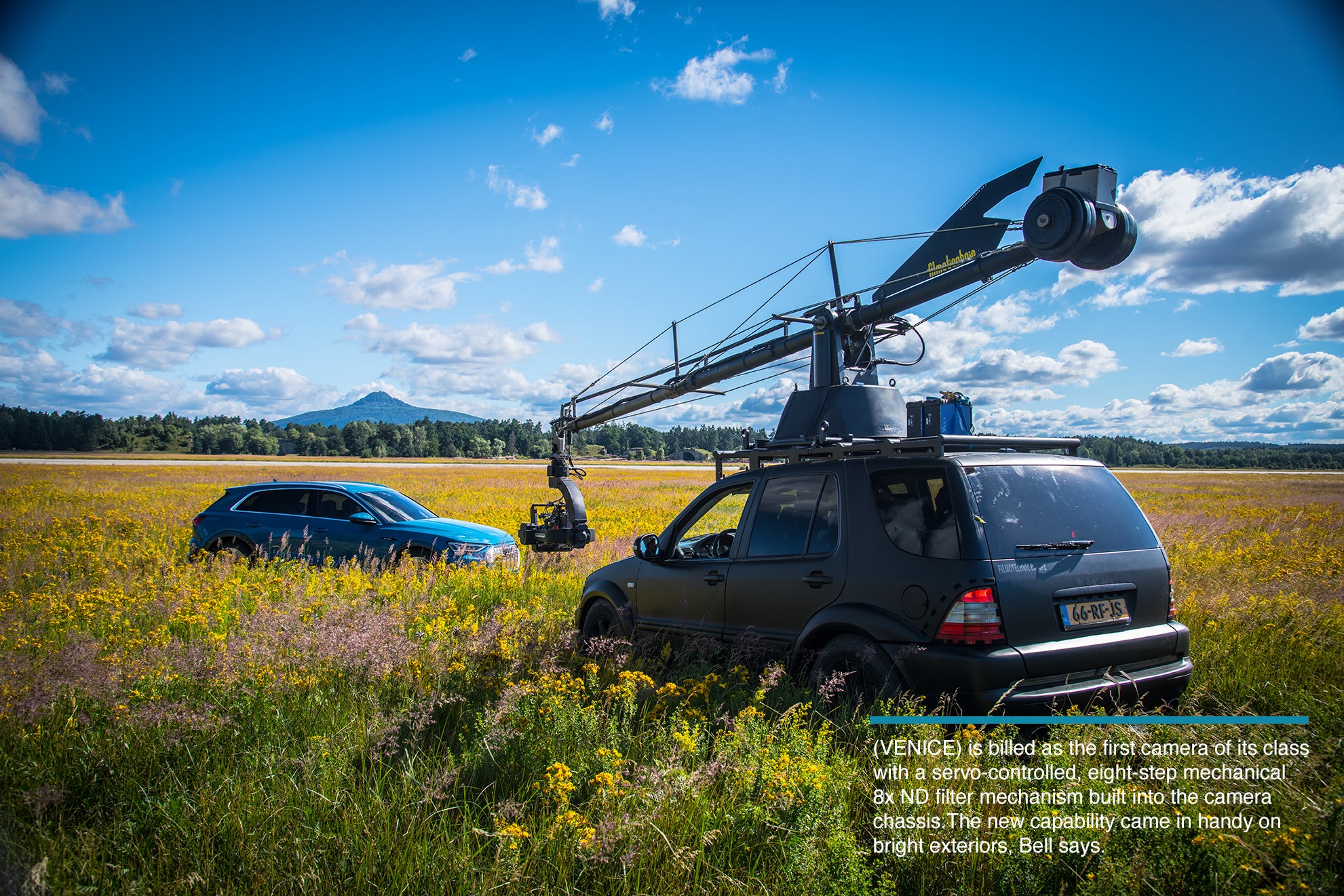
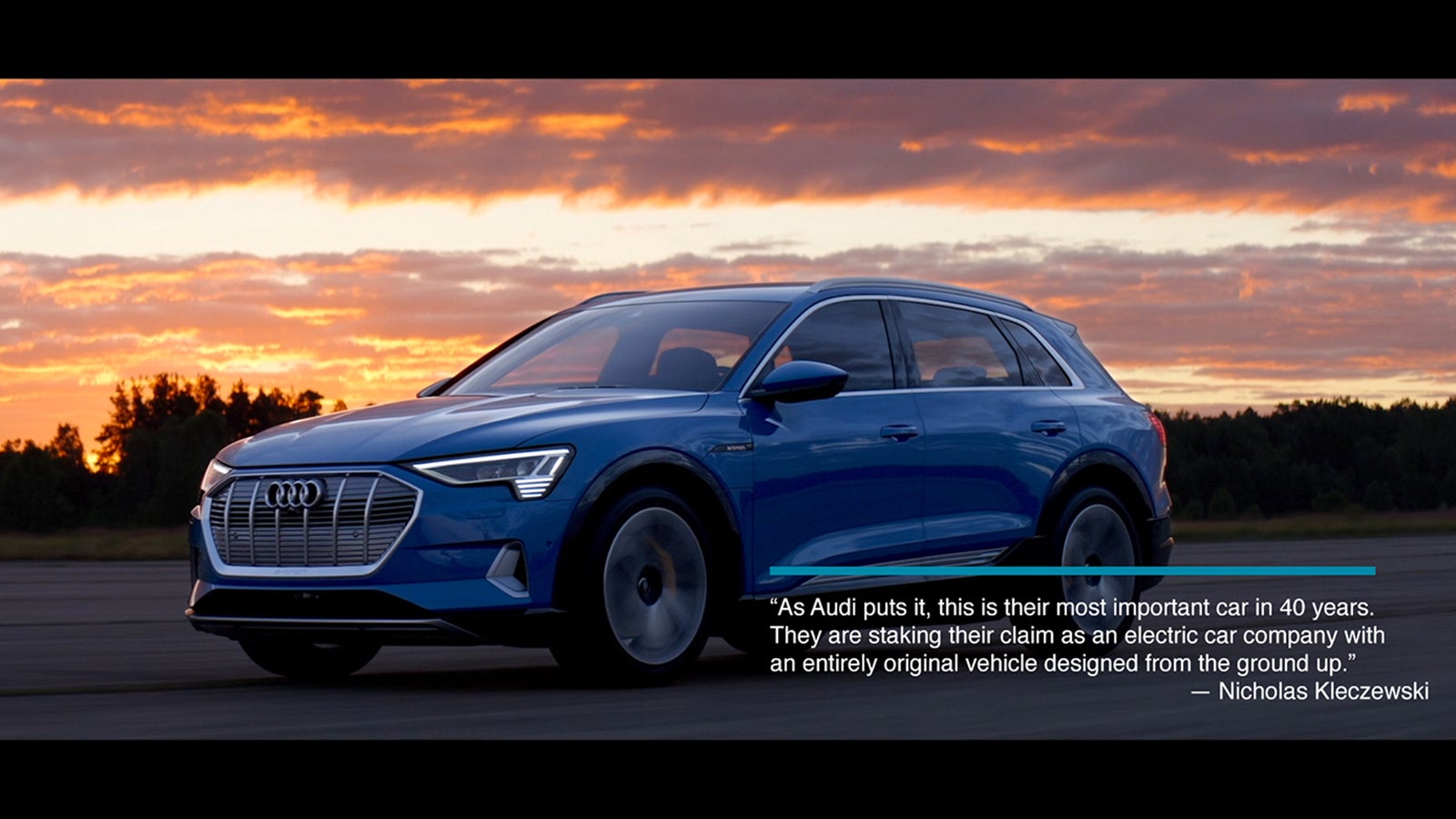
In the car interiors, Bell made frequent use of the VENICE Extension Block System in conjunction with the eMotimo Spectrum, a programmable, repeatable, pan and tilt/slider rig. The compact rig obviated the need for a “buck” – a car from the factory that can be pulled apart to get a larger camera-movement system inside.
“Buck rigs are harder to get these days,” says Bell. “We were looking at other ways of getting those shots, and we found that some of the motion control time-lapse systems have developed to the point where they are smooth and strong enough to record motion pictures. Previously, we were always running up against the limits, and it was like opening a can of worms. But they have caught up to our world. With the tether system, it was like a dream. We were well within the payload, even with anamorphic lenses. And we can purchase the rig for less than a day’s rental of the older systems.”
Proxies were recorded in S-Log3 with S-Gamut, with onset monitoring done with a S709 LUT developed by Sony with master cinematographer Claudio Miranda, ASC. Bell didn’t have to commit to any one LUT, even for dailies – which is a boon for postproduction, helping everyone see the right images, something directors of photography have been requesting for years.
“The S709 LUT is a little more open, and a little less saturated, like something between Log and a Rec709 LUT,” says Bell. “I felt it was great. I’m sure as I shoot more projects with the Sony VENICE, I’ll create more LUTs, load them in the camera and work with them. But the S709 was very pleasing, and a good place for me to live. I traditionally don’t do a lot of onset coloring. I can go off a standardized LUT, get it as close as possible in the camera, and know where I can push and pull later.”
On-set monitors and electronic viewfinders usually offer no more than eight stops of latitude, which can be a problem when the camera can see almost twice that. Sony solves this issue with a function that switches the output between high-key and low-key monitoring, showing either the high end or the low end of what the camera is recording.
“I’m used to using false color and waveform monitors, and I still use false color quite a bit, but
I felt like the high-key/low-key tool was one of the most useful for me,” says Bell. “With the press of a button, I can see very quickly in the viewfinder if windows or some clouds are going to blow out, and what information will be captured. It was helpful on the car interiors, where you’re lighting very dark areas, and your source is going to show up in all your trim pieces. It made those last-minute decisions, where you’re going back and forth in your mind just before ‘action’ is called, into very confident decisions. I’d never thought of it, but I wish I could give the person who thought of it a high-five. From here on out, it’s part of the way we work.”
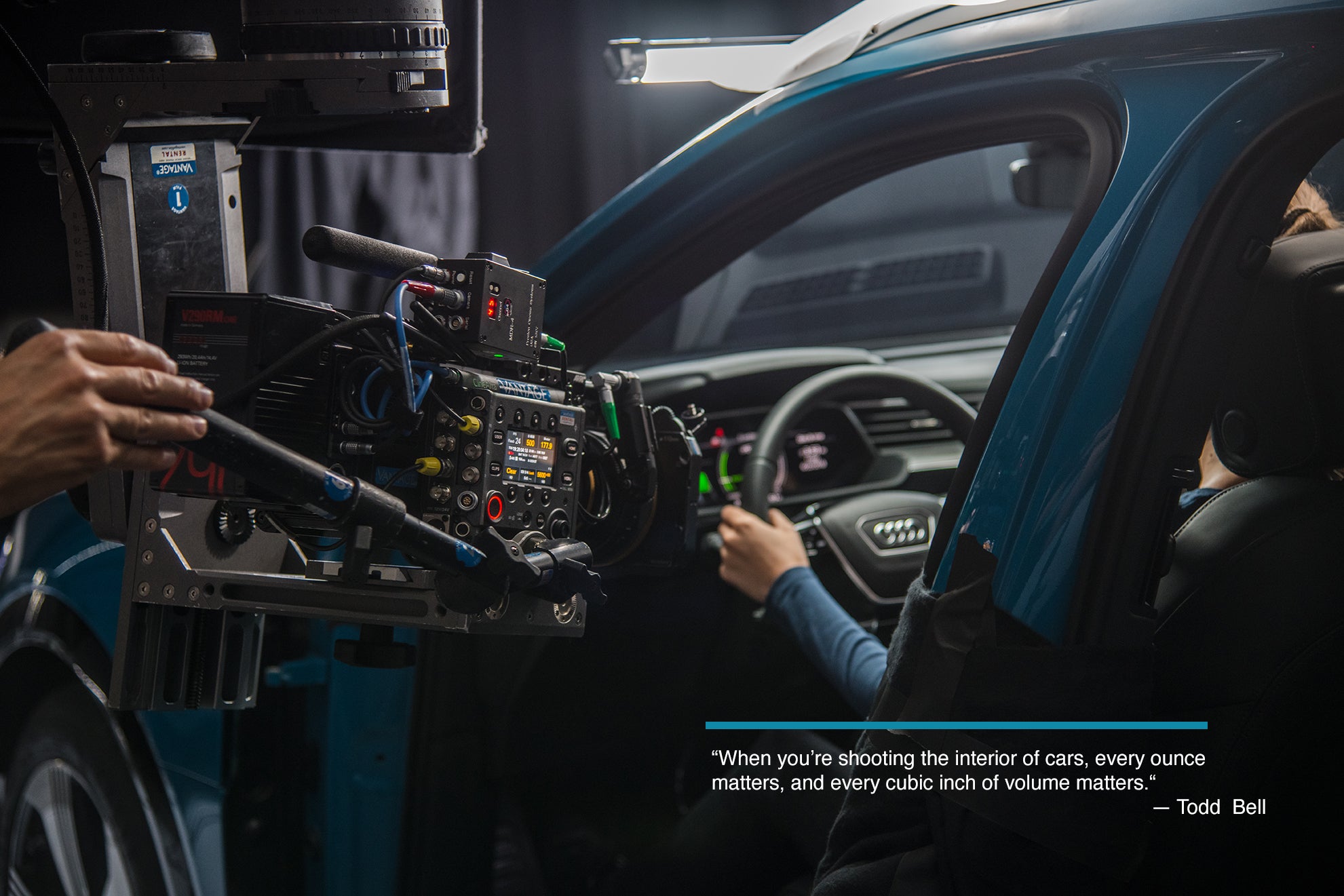

Meanwhile, the master was being recorded in 16-bit X-OCN format, which results in RAW files that are actually smaller than ProRes 4444 files, another boon to efficiency. “So there’s really never a reason to shoot any other format,” says Kleczewski.
The VENICE also takes a completely redesigned approach to the internal ND filters, and is billed as the first camera of its class with a servo-controlled, eight-step mechanical 8xND filter mechanism built into the camera chassis. The new capability came in handy on bright exteriors, Bell says.
“Having all of your NDs behind the lens is critical,” he says. “I can’t say enough about the way it increased the speed and quality of our productions. You don’t have to take the time, or risk the refractions that you get with filters in front of the lens. And having them in one-stop increments makes a lot of sense. I can’t imagine going back.”
In post, Kleczewski found further efficiencies and creative freedom.
“In car work, you’re often doing a lot more secondary work that you might otherwise do,” says the director. “If you have a natural dusk fall-off where you need the car to pop off the background, you’re definitely twisting the image away from the relatively flat way it was originally captured. When you do that, you’re setting yourself up for bad noise and artifacts and creating the need for noise reduction. With the X-OCN format, because the noise is so good from the VENICE, we could do that pulling and pushing of the image and not really see any negative results. I think we barely did any noise reduction on the final outputs. It’s an extremely impressive format.”
Looking back on the experience, Kleczewski says, “It was a very gnarly shoot. We went pretty much from sunrise to sunset every single day, which at the time, in that part of Europe, was like 5am to 10pm. Shooting anywhere near high noon is a worthless endeavor, because the car is essentially a giant mirror. Lighting, and almost all the other rules of filmmaking, go out the window. We assembled our most essential crew, a group of people that I trust with my life. They know what it takes to get this stuff done. Todd knows how to make beautiful images happen and he does it well.”
Bell adds, “The VENICE was a good match for this project. The Audi e-tron is taking a classic design and bringing it into the future of automotive transportation. And the VENICE seems like the next level of digital cinema cameras. I couldn’t have been more pleased with the results.”
